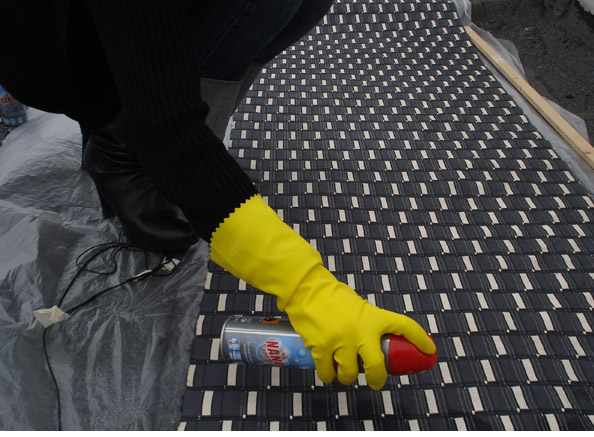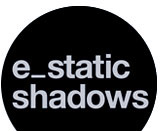
__
Image 01 / Stage 03
E-Static Shadows weave sample.
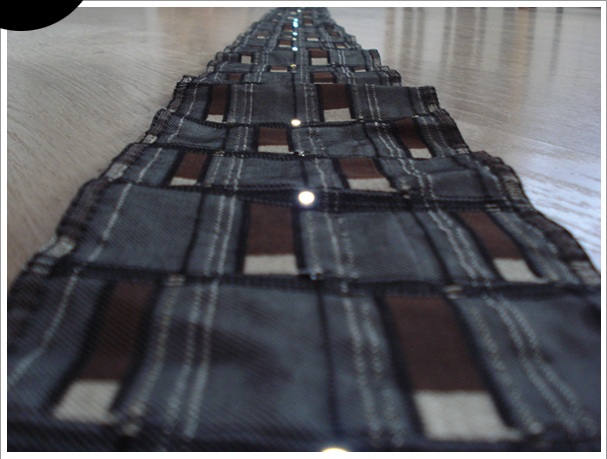
The project is hosted by:

The project is funded by:


The project is sponsored by:


The project is supported by:

![]()

Stage 3_Design and technology
development
September 2008 - February 2009
The final stage of the research project was concerned with the production of the final 'E-Static Shadows' prototypes in close collaboration with TITV Greiz and preparation for the public dissemination of the work in the form of an interactive installation at the London Science Museum's Dana Centre.
__
Image 02 / Stage 03
Testing the real size (4m long) weave sample to see if the weave system functions and if this can now be transfered onto the large Jacquard loom for weaving the final prototypes.
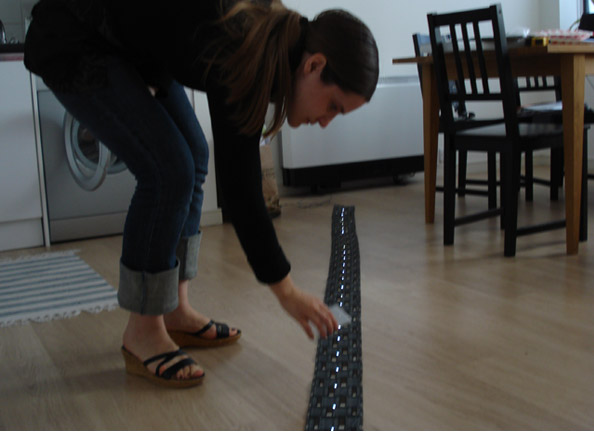
__
Image 03 - 05 / Stage 03
Planing the final weave and transferring the technical files from the small testing loom format to the large Jacquard loom format.
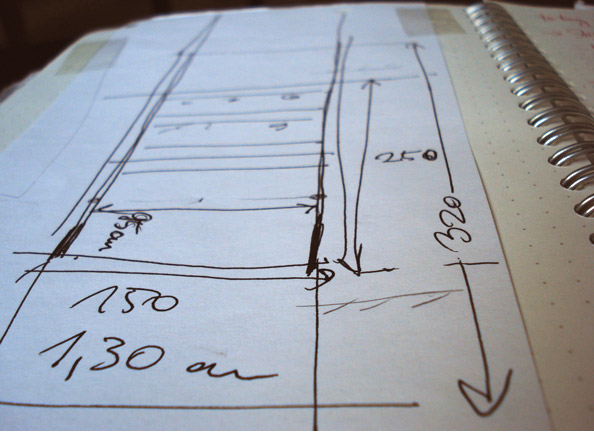
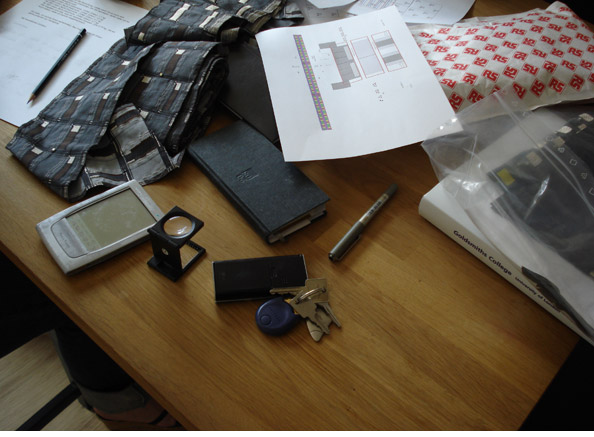
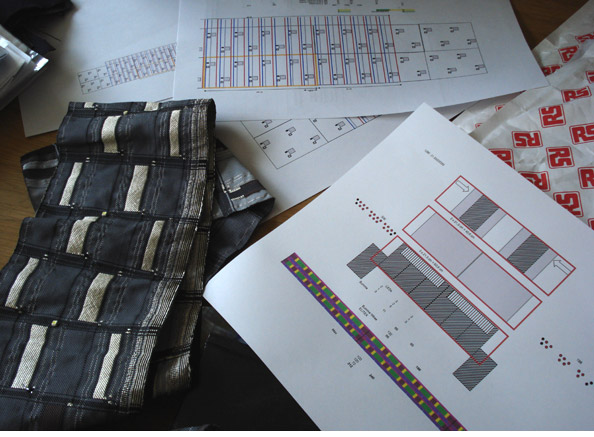
__
Image 06 - 07 / Stage 03
Preparing for the weaving of the final e-textiles prototypes on the Jacquard loom at TITV - cheching the developed weave files.
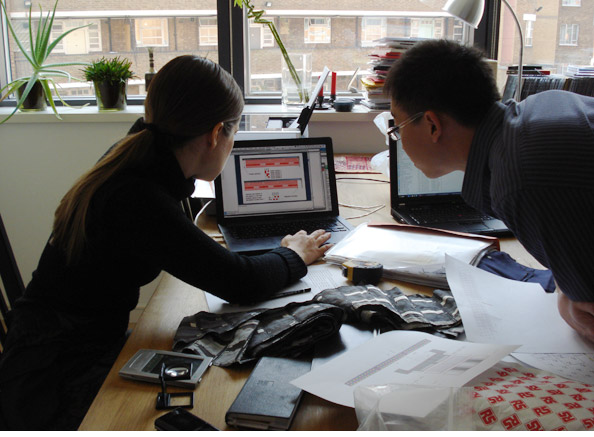
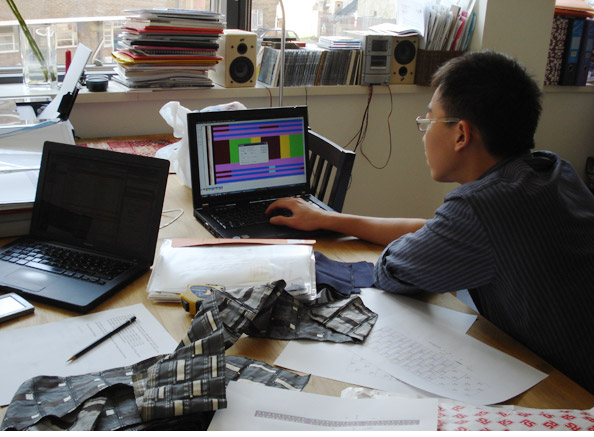
__
Image 08 / Stage 03
Conductive thread selected for integration into the weaving structure in order to produce individual power lines. This type of relatively stiff copper thread required a special loom set-up at TITV to accomodate so many metal wires in the warp structure. The scientists at TITV rebuilt the loom in creative ways and solved the problem.
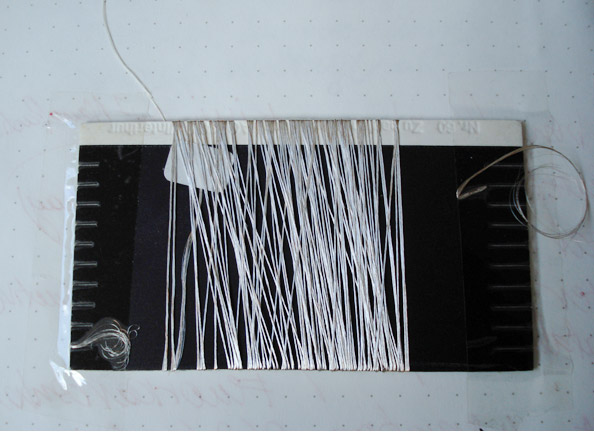
__
Image 09 / Stage 03
Dummy test for the final weave at TITV.
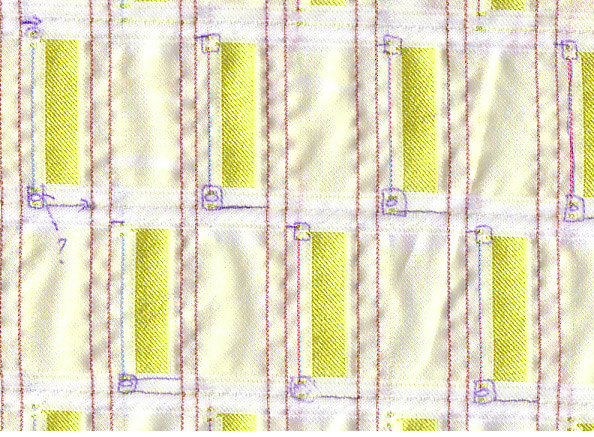
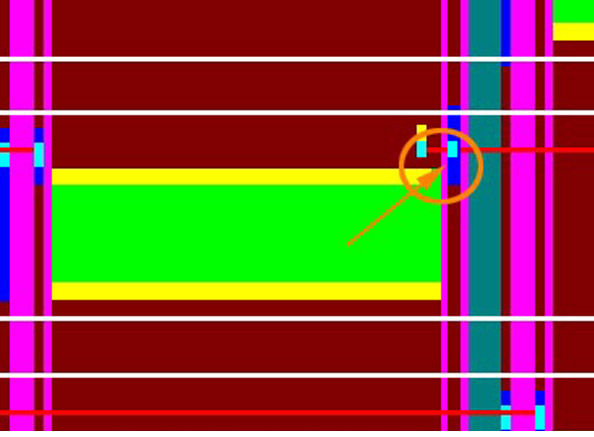
__
Image 10 / Stage 03
Fine-tuning the final weave structure
__
Image 11 / Stage 03
The first test off the large Jacquard loom by Dr. Neudeck - the transfer from the small loom has worked!
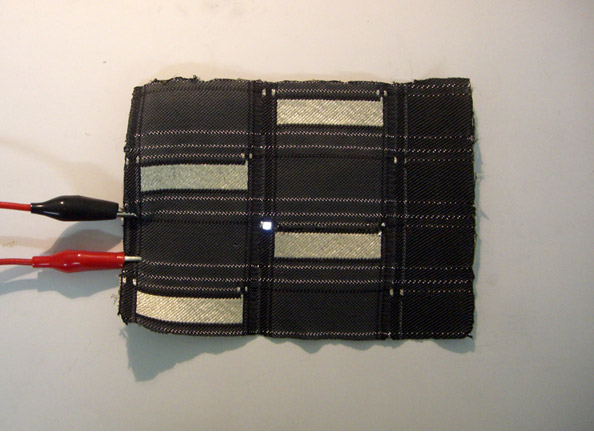
__
Image 12 / Stage 03
Testing the system for sound aspects and making a decision to use localised sound employing headphones for the installation as the previous concept of attaching heavy amplifiers, loudspeakers and mixers contradicted with our ambition to develop a light system. We also think that using headphones will offer a more intimate experience for the visitors when individually listening into the sound of fabric.
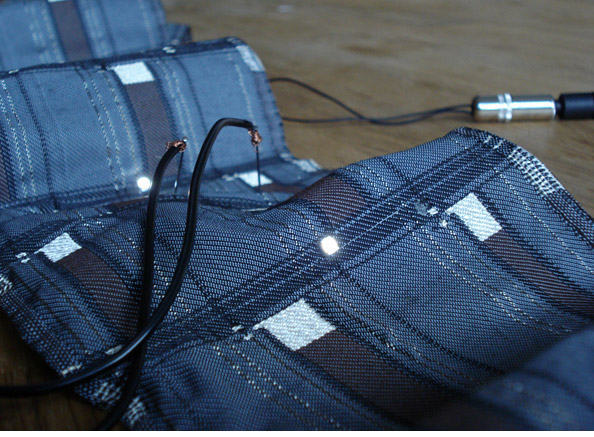
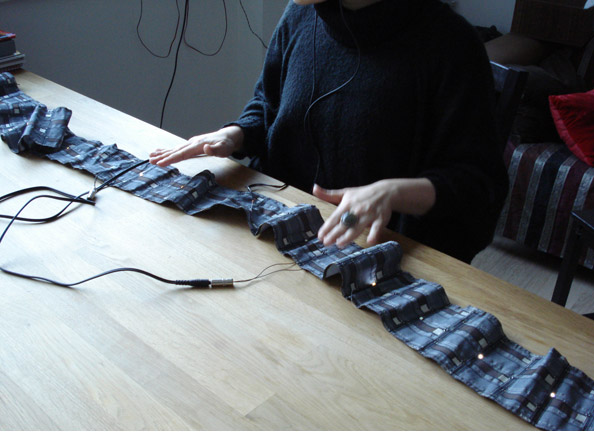
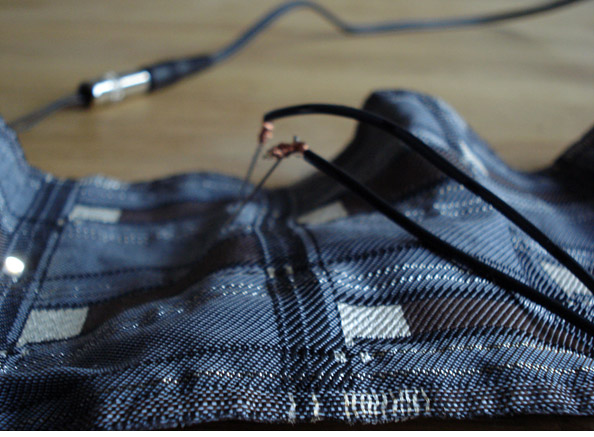
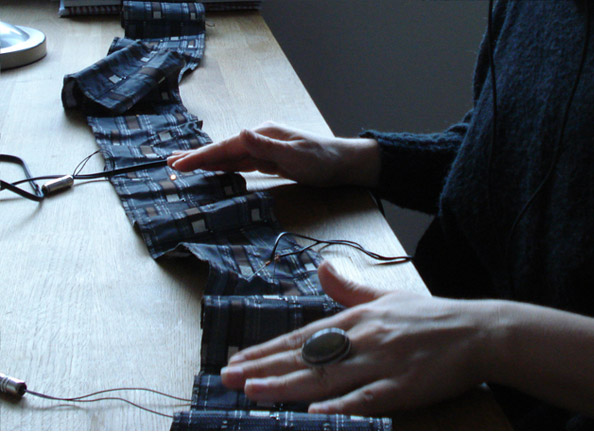
__
Image 13 - 15 / Stage 03
Listening to the fabric through headphones.
__
Image 16 / Stage 03
The first two large scale e-textile lenghts have arrived in London from TITV! We have to quickly equip them with the necessary electronic components and test the entire real-size system for possible errors in order to give the final go-ahead to TITV to weave the rest of this highly precious cloth.
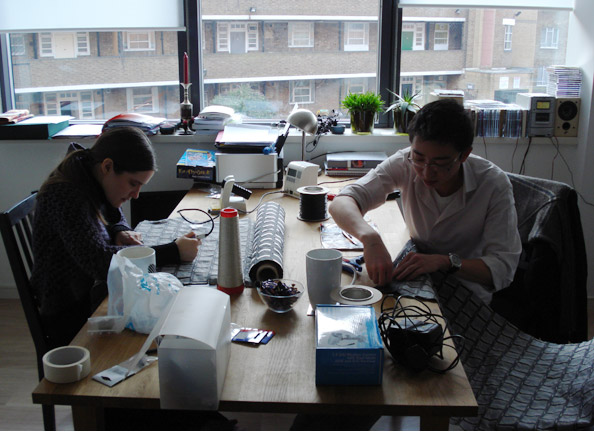
__
Image 17 - 21/ Stage 03
The very first finished 1:1 prototype - IT WORKS!!! WOW!!!!





__
Image 22 - 24/ Stage 03
We are also guite pleased with the interaction element - the system responding to e-static charges. However a Teflon sheet (which as a material is very negatively charged) works the best; the system does not really respond well to the human hand..... The dryness of the environment as well as of the textile system itself has to be increased for better results.



__
Image 25 - 26 / Stage 03
All the fabrics have been woven at TITV and have arrived in London. The mass production of the large prototypes has started - cutting the conductive threads, soldering LEDs and transistors. It is all manual and very precise work.







__
Image 27 - 30 / Stage 03
Cutting of the conductive threads in the weave structure in order to obtain a clean e-structure with functioning circuits.
__
Image 31 / Stage 03
This is how a clean-cut textile surface looks like.
__
Image 32 - 33 / Stage 03
Luckily we are having helping hands for cutting and soldering as these are very time-consuming tasks.




__
Image 34 / Stage 03
The mass production soldering is finished but the system still needs to be checked for errors and non-working LEDs or/transistors.
__
Image 35 / Stage 03
Checking the electrical properties of the finished e-textile system.
__
Image 36 / Stage 03
A lot of trouble-shooting has to be done - quite a few LEDs are not lighting up and transistors are not responding to e-static. The reasons can be several - bad insulation of conductive areas through errors in the thread cutting and therefore electric shortcuts; cold soldering; burned circuit, loose contact, etc.
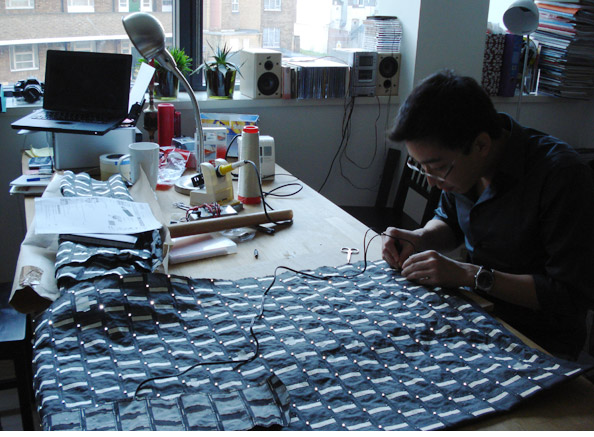
__
Image 37 - 40 / Stage 03
Finishing of the textile modules: connecting each of the 23 individual power lines to the main power line at the edges of the cloth by sewing and soldering.
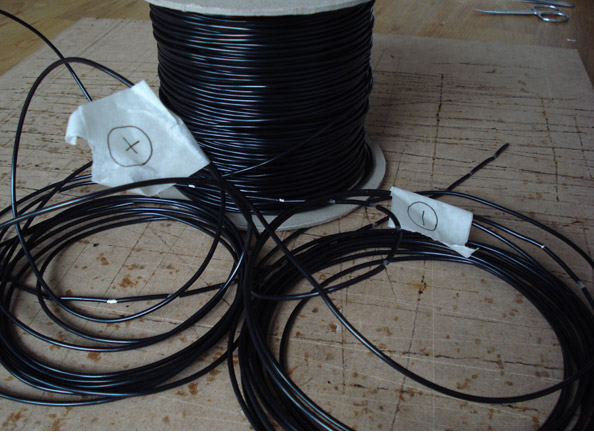
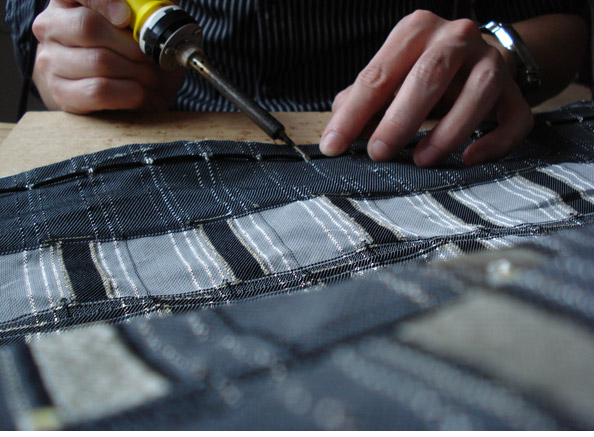
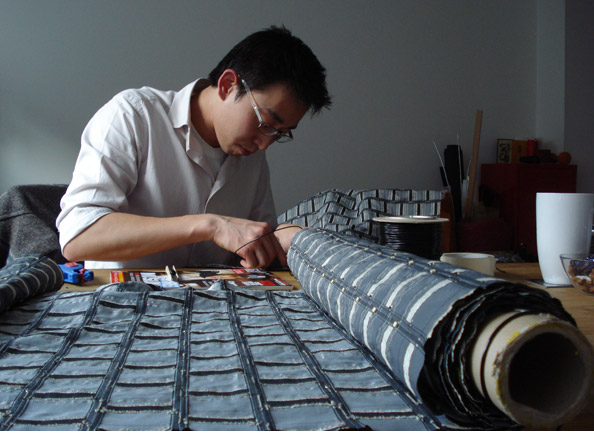
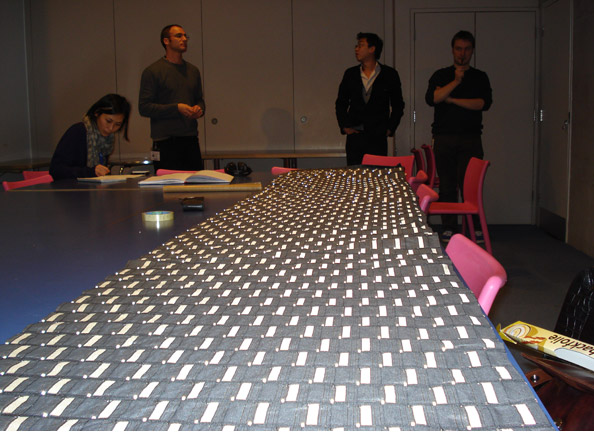
__
Image 41 / Stage 03
Discussions with the Science Museum's Dana Centre team regarding the planning and preparation of the public installation.
__
Image 42 - 45 / Stage 03
More images of the working prototype.




__
Image 46 - 47 / Stage 03
The dryness of the textile system has to be increased and thus the sensitivity to the e-static charges. In order to do this a special nano-spray is used to impregnate the cloth.

